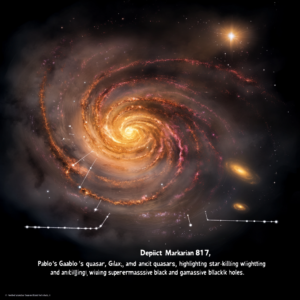
Revolutionizing Cloud Servers for a Greener Future
In the grand odyssey of churning technology gears and navigating the choppy waters of environmental responsibility, the tech world has decided to take a bold step into the unknown. In an arena where every gadget and gizmo clinks together to form the symphony of daily life, there lies a pressing undertone—carbon emissions, the pesky soundtrack of climate change. But fear not, esteemed reader, for a glimmer of hope has emerged from the hallowed halls of Carnegie Mellon University (CMU), where researchers have concocted a method that promises to ease those emissions as if they were merely a pesky fly buzzing around.
Now, let’s set the scene. Information and Communication Technology (ICT) is not merely the bread-and-butter option on the buffet of global emissions; it has escalated into becoming a genuine threat. Currently, it accounts for a disquieting 2% to 4% of worldwide carbon emissions, and projections suggest it could skyrocket to a staggering 20% by the end of the decade. The culprit? As our devices get decidedly “smarter” and immerse themselves in the cushy embrace of cloud computing, they become more demanding on our precious energy resources.
Speaking of demands, let’s pull back the curtain on the issue of cloud computing emissions. This is the heavy artillery responsible for releasing two ugly types of emissions: operational emissions, born from power generation, and embodied emissions, which come from the staggering production of hardware components. While the cloud has undoubtedly paved the way for innovation, it's also an emissions monster that both tech giants like Microsoft and Google are earnestly trying to tame.
Enter the dynamic duo of innovation—Jaylen Wang and his band of researchers from CMU, who have joined forces to develop a revolutionary methodology dubbed GreenSKUs (Green Stock Keeping Units). This isn’t just some regular run-of-the-mill initiative; it’s a systematic approach targeting the design and deployment of cloud servers with the grand ambition of minimizing emissions while keeping performance goals firmly in sight.
Now, let me throw a few highlights your way. The first point worth a mention is the embrace of energy-efficient components in server design. Picture this: energy-efficient CPUs flanked by reused old DRAMs dancing happily with charming SSDs that have seen better days. By incorporating these elements, we not only slice operational emissions but also take a colorful stab at battling the embodied carbon that’s suffocating our planet.
The pièce de résistance here is the concept of elastic resource utilization. The GreenSKUs methodology cleverly ensures that we’re not just throwing (or should we say, wasting?) resources about like confetti at a parade. Instead, it optimizes server usage in a manner that would make a seasoned conductor proud, enabling a melodic interplay of capacity planning and resource management. It’s like conducting an orchestra where each server only plays when it needs to, ultimately leading to fewer idle servers and a significant drop in energy consumption.
Next up is the drama of carbon-aware workload shifting. Imagine a world where compute-heavy tasks are thoughtfully executed in locales or at times when the electricity grid plays a softer, less carbon-intensive tune. It’s almost like staging a performance that moves from the boisterous spotlight to a soft-lit corner, resulting in significant emissions reductions, especially for those non-time-sensitive tasks that can afford to be patient, like training machine learning models.
Now, if you’re wondering how this innovative approach translates into tangible results, look no further than the Green Server Framework, or GSF for short, which the bright minds at CMU have introduced. With its systematic outlines, the GSF provides cloud providers with the guidance they desperately need to design and deploy carbon-efficient server SKUs like seasoned maestros conducting a symphony.
Let’s get to the nitty-gritty: initial trials of the GSF framework revealed a decent 10% reduction in Microsoft Azure's carbon emissions. Now, for those of us keeping score, this reduction doesn’t just impact Azure; it has the potential ripple effect of cutting global carbon emissions by up to 0.2% by 2030. That might not sound like a massive figure, but hey, every little bit helps when you’re dealing with a climactic conundrum of this scale.
What does this bold leap into sustainability mean for the future? The GreenSKUs method is not merely a one-off event but a fundamental shift in thinking about ICT and its ecological footprint. One significant aspect is addressing the ever-pressing issue of planned obsolescence. By reusing decommissioned components, these researchers are wistfully bidding adieu to heaps of ICT waste, while simultaneously slashing manufacturing emissions to boot.
As we hurtle towards the horizon of machine learning and virtual wizards like ChatGPT, the necessity for specialized hardware becomes ever more pressing. Here’s where the GreenSKUs methodology steps in, ready to support the burgeoning needs of tomorrow while ensuring that carbon emissions don’t run amok.
As we near the conclusion of this exhilarating narrative, it’s crystal clear that the methodology developed for designing cloud servers with lower carbon emissions positions us on a crucial pathway toward a more sustainable digital future. As our dependency on cloud computing grows, it’s heartening to think that innovations like GreenSKUs and GSF might help to harmonize our technological cravings with our environmental responsibilities.
For those of you longing for more delightful nuggets of wisdom on cloud computing, sustainability, and general tech shenanigans, feel free to check the original research and official publications. But if you want to dive even deeper into this universe or just keep your finger on the pulse of the latest developments in neural networks and automation, opt for an exciting journey with us and subscribe to our Telegram channel: @channel_neirotoken.
In the end, it’s all about progress—let’s not leave the planet behind while we chase the shimmering lights of innovation!

